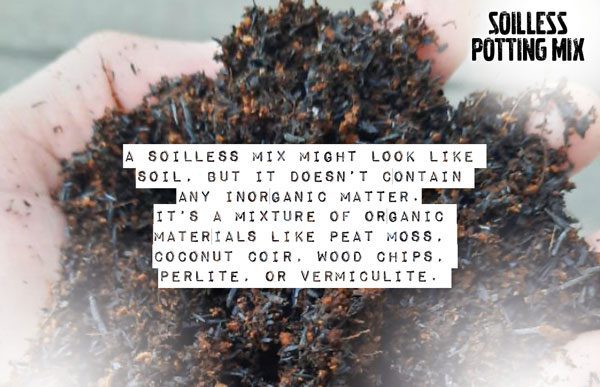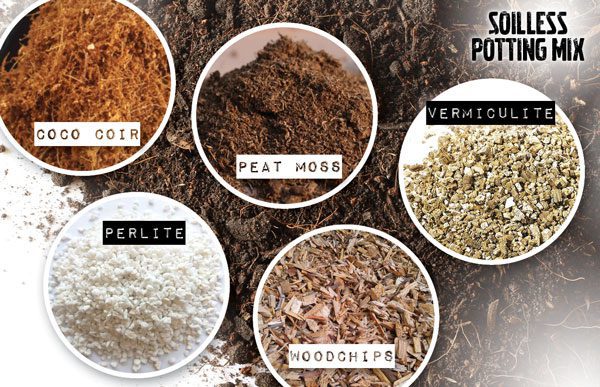The term “soilless mix” is thrown around a lot in the gardening world, assuming that we all know what it means. But what if you don’t? Well, give me a few minutes of your time, and that will no longer be the case. And next time you’re at a party and someone says “soilless mix” (because what party doesn’t eventually turn into a conversation about gardening?), you can nod your head and smile – and maybe even throw in a few pearls of wisdom yourself.
What Is a Soilless Mix?
A soilless mix might look like soil, but it doesn’t contain any inorganic matter (sand, clay, silt, etc.). It’s a mixture of organic materials like peat moss, coconut coir, wood chips, perlite, or vermiculite. There might also be a slow-release fertilizer in there as well.

What’s Wrong With Soil?
There are two disadvantages to using garden soil:
- Unwanted Friends in the Soil
With garden soil, you can’t be sure what extras are coming along for the ride. Unwanted bacteria, weed seeds, non-plant friendly insects, disease spores, and more often tag along.
When using it outside, you have the weather and natural predators that often help counterbalance the soil surfers. But if you are using the stuff inside, there could be trouble.
- Weight/Drainage
Add garden soil to one of your indoor pots, and that pot is going to be heavier to carry and move around the room. Also, garden soil compacts quickly after just a few rounds of watering, harming drainage and reducing airflow.
Again, if you are using it outside in a garden, then you and those helpful little earthworms can till the soil to counteract this problem. And sure, you can move earth around in indoor and smaller gardens and pots, but with a soilless mix, you don’t have to.
Also, with young plants, compact soil is not ideal for their more delicate roots. Soilless mix, on the other hand, is lighter and airier. Drainage and airflow are improved as well.

Can You Reuse The Soilless Mix?
Whether you make your own or buy it, reusing the soilless mix is easier on the wallet and less wasteful. However, there are a few caveats to that.
Make sure the last crop didn’t have any root diseases or insect infestations. Also, only reuse mixes with a clear ingredient list. You will also want to flush out of the previous crop and remove old root debris.
Peat
Most soilless mixes come with peat. The problem with that is peat is not a renewable resource, and the harvesting of the material is doing quite a bit of damage to delicate ecosystems and our environment.
So, what can you do about it? With the growing peat-free movement, you should start seeing non-peat soilless mixes becoming more readily available.
You can also easily make a homemade soilless mix using stuff like compost, coir, composting leaves, etc. There are plenty of “recipes” available online with different ratios to try.